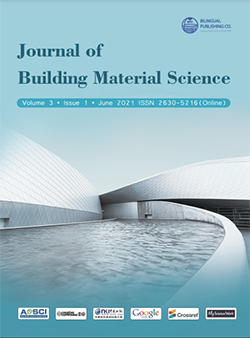
Study on the Suitability of Soils in Ilu Aba Bora Zone for Hydraform Block Production for Low Cost Construction
DOI:
https://doi.org/10.30564/jbms.v3i1.3156Abstract
Due to a high construction material cost in Ethiopia, it is difficult to afford a shelter by most our peoples. The Hydra form block (HFB) has been identified as low-cost building material with its potential and possibility to reverse the housing problem. Laboratory tests were conducted on Mettu, Nopa, Gore, and Hurumu areas soil. Using hydra form machine with average mold size of 29*14*10cm, hydra form blocks were casted with the three percentages increment of cement. Compressive strength and water absorption tests were conducted at 28 days. The investigation has revealed that all the soil sample except Gore soil have significant characteristics that make it suitable for stabilization with recommended soil properties. From the experimental study, all the blocks except blocks produced with Gore soil have 28th day compressive strength values well above most of the recommended minimum values. Water absorption was less than the maximum limit of 15%. But, for control block and for stabilized with 3% cement, water absorption result is out of the recommended values (0-15) %. The cost comparison of Hydra form blocks with hollow concrete block and fired clay brick shows that the Hydra form block is cheapest walling material in terms of production cost and a typical hydra form block production center can create a job for more than 50 peoples.
Keywords:
Hydra form block; Compressive strength; Cost comparison; Cement; Water absorptionReferences
[1] Baba, S. W., Zanna, A. L., Mustapha, M. M. (2013). Properties of Compressed Stabilized Earth Blocks (CSEB) For Low-Cost Housing Construction: International Journal of Sustainable Construction Engineering and Technology. 4 (2).
[2] Kerali, A. G. (2001). Durability of compressed and cement-stabilized. A thesis submitted in partial fulfilment of the requirements for the degree of Doctor of Philosophy in Engineering, University of Warwick.
[3] Montgomery, D. E. (2002). Dynamically-compacted cement stabilized soil blocks for low-cost walling, University of Warwick, School of Engineering.
[4] African Regional Standards, (1998). Compressed Earth Blocks Standards, CDI and CRATerre Publications.
[5] Holmes, S., Rowan, B. (2015). Building with lime and lime stabilized soil. 2nd edition 2014 - 2015. A Manual and Practical Guide for the Selection, Preparation, Testing and Application of Natural Materials for Durable Earth Based Low Cost Construction.
[6] Chimuanya, O. T., Salleh, N. M., Raja, T. A. (2014).Stabilization of compressed earth block using laterite soil. Infrastructure University Kuala Lumpur Research Journal. 2(1).
[7] Ongpeng, J. M. C., Gapuz, E., Roxas, C. L. C. (2017). Optimization of mix proportions of compressed earth blocks with rice straw using artificial neural network. Advance in structural engineering and mechanics (ASEM17). Llano, Korea.
[8] Raheem, A. A., Bello, O.A., Makinde, O.A. (2010). A Comparative Study of Cement and Lime Stabilized Lateritic Interlocking Blocks. The Pacific Journal of Science and Technology. 11(2).
[9] Tadege, A. (2007). Study of compressed cement stabilized soil block as an alternative wall making material. A thesis submitted to The Schools of Graduate Studies of Addis Ababa University in partial fulfillment of the requirements for the Degree of Master of Science in Construction Technology and Management.







 Beneyam Neguse Furgasa
Beneyam Neguse Furgasa





